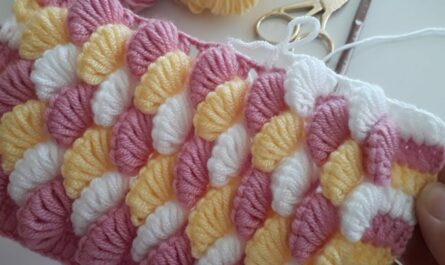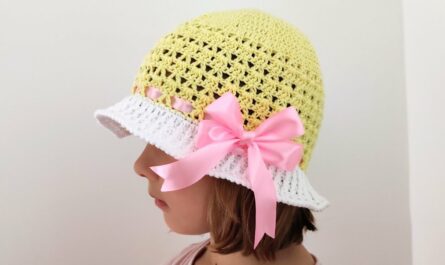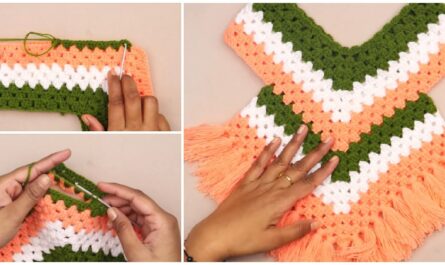The whisper of winter’s chill, the sparkle of frost, and the enchantment of classic fairy tales – these are the inspirations behind a “Winter’s Tale” crocheted garment. More than just a warm layer, this cardigan or coat for a girl is a wearable piece of storytelling, designed to evoke images of snowy forests, cozy cottages, and magical adventures. It’s a project that combines substantial warmth with whimsical charm, creating a truly unique and cherished garment.
If you’re ready to spin a yarn of comfort and enchantment, this detailed guide will illuminate the path to crocheting a “Winter’s Tale” cardigan or coat, a garment fit for any little heroine.
Embracing the “Winter’s Tale” Aesthetic
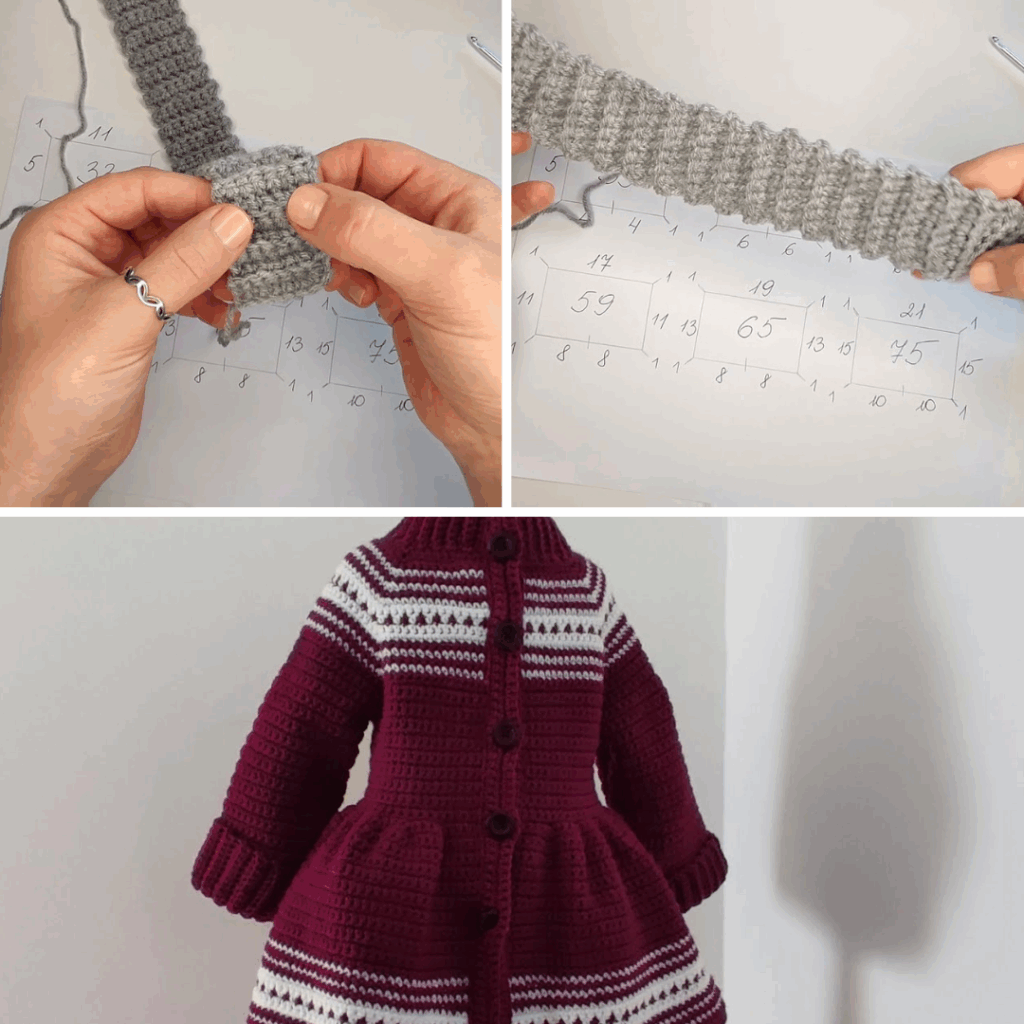
The magic of this project lies in its ability to translate a storybook winter into tangible stitches:
- The Color Palette: Frost-Kissed & Forest Deep:
- Snowy Neutrals: Dominant shades of pure white, off-white, cream, ivory, or subtle silvery grey to mimic snow, ice, and winter light.
- Icy Accents: Touches of pale to deep icy blues, frosted teals, or soft lavenders to evoke frozen landscapes and winter skies.
- Woodland Depths: Rich forest greens, deep evergreens, charcoal, and dark browns for the heart of the forest.
- Berry & Bloom: Pops of cranberry red, deep burgundy, or rich plum, like hidden berries or magical fruits.
- Whispers of Gold/Silver: Consider a yarn with subtle metallic flecks for a touch of fairy-tale sparkle, or a muted gold/mustard for a hidden sunbeam effect.
- Strategy: You can choose a single dominant color with subtle textural contrasts, or create gentle colorwork (stripes, panels) that evoke these specific seasonal transitions.
- Yarn Texture & Weight: Plush Warmth & Resilient Softness:
- Weight: For a true winter garment, Worsted (Category 4) or Bulky (Category 5) weight yarns are ideal. Bulky yarn will create a faster project and a wonderfully thick, coat-like fabric, while worsted offers excellent stitch definition.
- Fiber: Prioritize warmth, softness, and durability for active children:
- Superwash Merino Wool: Exceptionally soft, warm, breathable, and conveniently machine washable – a huge plus for kidswear.
- Alpaca Blends: Incredibly soft and lightweight yet incredibly warm. Some alpaca blends have a lovely subtle halo, mimicking frost.
- High-Quality Acrylic (Anti-pilling, Brushed): Modern acrylics are wonderfully soft, durable, hypoallergenic, and very easy to care for. Look for brushed or anti-pilling varieties for a cozy, long-lasting finish.
- Mohair Blends (Kid Mohair): Used sparingly or throughout, mohair adds a beautiful, delicate halo that truly evokes a frosty, ethereal quality, but might not be suitable for very sensitive skin.
- Avoid: Overly stiff or very open lace stitches, as they won’t provide the necessary warmth for a winter garment.
- Stitch Patterns: Textured Whimsy & Cozy Density:
- The goal is to create a dense, insulating fabric with visual interest that aligns with the “Winter’s Tale” theme.
- Main Fabric: Half Double Crochet (HDC) or Double Crochet (DC) provide a good foundation. The Moss Stitch (Linen Stitch) creates a dense, squishy, woven texture that feels wonderfully cozy and looks refined. The Basketweave Stitch offers a rich, deep texture.
- Textural Accents:
- Puff Stitch or Bobble Stitch: Strategically placed, these can resemble soft snowflakes, charming clusters, or tiny berries.
- Post Stitches (FPDC/BPDC): Create defined vertical lines or panels, suggesting tree bark or resilient stems. You can even create “faux” cables with clever arrangements of post stitches.
- Crocodile Stitch: Used for cuffs, collars, or hood edging, this creates a scale-like, dragon-skin texture that can be surprisingly whimsical and warm.
- Delicate Shell Stitch: For edgings, a fine shell stitch can mimic the delicate structure of ice crystals or snowflakes.
- Design Details: Storybook Charm:
- Silhouette: A classic A-line shape offers freedom of movement and a charming drape. A straight cut is also timeless.
- Hood: A deep, cozy hood is essential for warmth and the “tale” aspect. Consider a slightly pointed hood for a whimsical elfin look, or a rounded, generous hood. You could even add subtle “bear ears” for an animal-inspired touch.
- Closure: Large, decorative buttons (wooden, frosted glass-look, pearlized, or metallic), classic toggle buttons, or even a tie-waist with a long crocheted belt for a cinched, storybook feel.
- Embellishments (Optional, but Enchanting):
- Small crocheted snowflake appliques sewn onto the shoulders or cuffs.
- Subtle embroidery of swirling frost patterns or tiny stars.
- Small crocheted woodland animals (a little deer, a fox, an owl) as appliques.
- A “fur-look” yarn trim around the hood edge or cuffs for extra coziness.
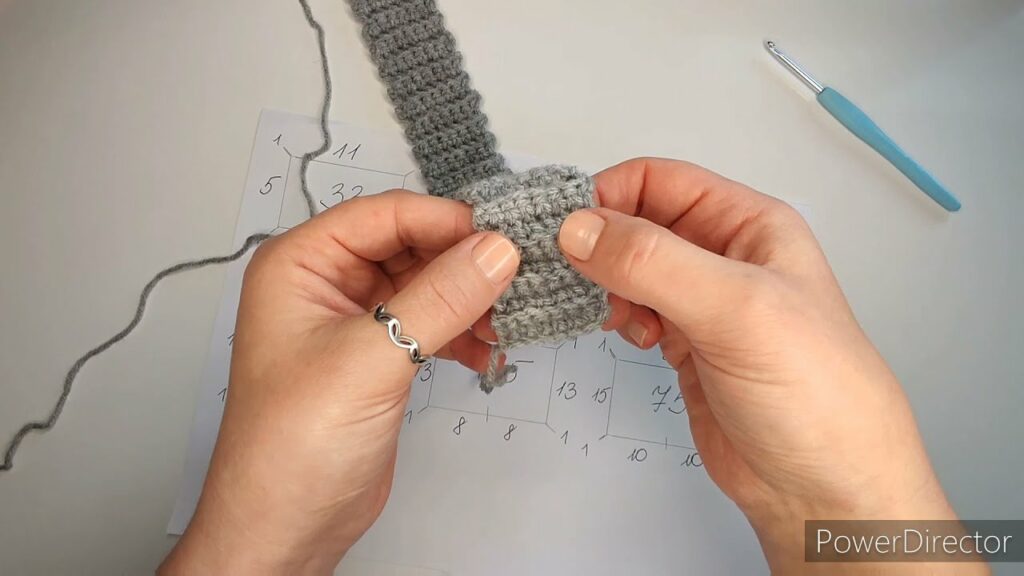
Why a “Winter’s Tale” Cardigan/Coat for Girls?
This garment transcends a simple everyday layer:
VIDEO TUTORIAL PART 1 ;
- Superior Warmth & Protection: Designed as a substantial outer layer, it provides significant warmth against winter’s bite.
- Encourages Imagination: It’s more than clothing; it’s a costume for everyday adventures, fostering imaginative play.
- Unique & Personalized: A handmade piece will stand out, carrying the warmth and love of its creator.
- Durability for Play: With the right yarn and stitches, it’s robust enough for active children.
- Heirloom Potential: Such a special and beautifully crafted garment is destined to become a cherished family heirloom.
Planning Your “Winter’s Tale” Project
Careful planning is the foundation for a successful and beloved garment:
- Size Selection: Use standard children’s clothing sizes (e.g., 2T, 4T, 6, 8, etc.). A coat/cardigan needs to fit comfortably over other layers, so ensure you take accurate measurements of the child’s chest circumference, arm length (shoulder to wrist), and desired overall length (shoulder to mid-thigh for a coat, hip for a cardigan).
- Choose a Pattern (Essential!): While this guide provides creative direction, you must select a well-written crochet pattern specifically for a child’s coat or a substantial cardigan. Look for patterns that include:
- Detailed schematics and comprehensive sizing charts.
- Clear, step-by-step instructions for all shaping (armholes, neckline, collar/hood).
- Crucially, precise gauge information for the specific stitch patterns used.
- High-quality photos to guide your vision.
- Construction Method:
- Panel Construction (Common for Coats): Crochet the back panel, two front panels, and two sleeves as separate flat pieces. These are then meticulously seamed together. This method often results in a more structured garment with crisp lines, ideal for a coat.
- Top-Down (Seamless Raglan): A popular choice for cardigans due to minimal seaming. You start at the neckline and work downwards, increasing stitches along “raglan lines” to form the shoulders and body seamlessly. Sleeves are worked directly from the armholes. This can be adapted for a coat, but requires careful attention to length and closures.
- The Gauge Swatch (Non-Negotiable!): This is the single most critical step for any garment. Crochet a large swatch (at least 6×6 inches / 15×15 cm) using your chosen yarn and hook in the main stitch pattern of the coat. Wash and block the swatch exactly as you would the finished garment, then measure it precisely. If your stitch count or row count per inch/cm doesn’t match the pattern’s gauge, adjust your hook size (go up for fewer stitches per inch, down for more) until it does. Skipping this step is the primary reason for a garment not fitting correctly.
Materials You’ll Need
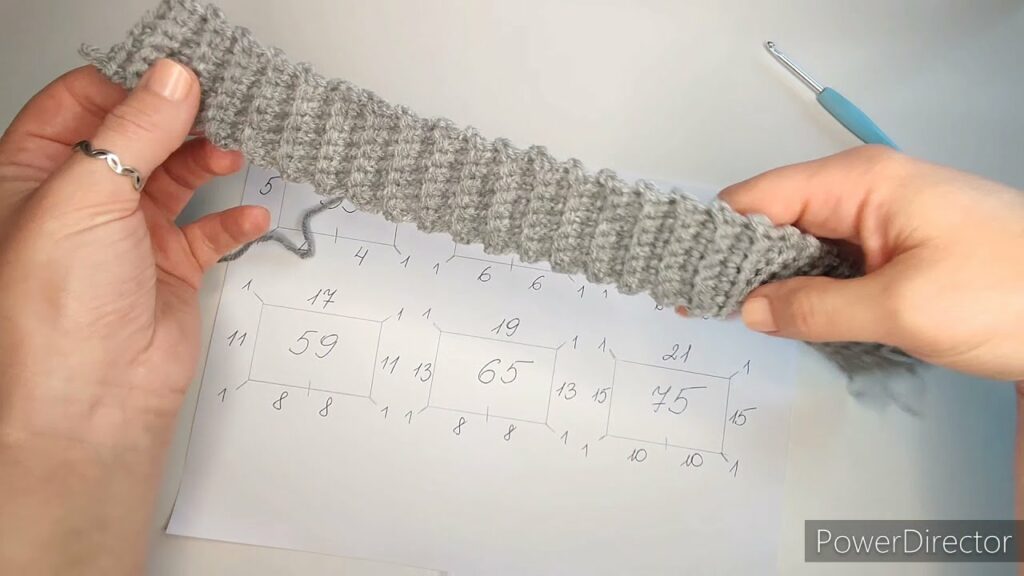
- Yarn: (As detailed in the “Winter’s Tale Aesthetic” section) The quantity will be substantial, typically ranging from 6-15+ skeins depending on the size and yarn weight.
- Crochet Hook: The size recommended by your pattern, adjusted based on your gauge swatch.
- Notions:
- Stitch Markers: You will need many! Essential for marking shaping points, row beginnings, and seam lines.
- Tapestry Needle: For neatly weaving in yarn ends and creating strong, invisible seams.
- Scissors: Sharp and dedicated for yarn.
- Measuring Tape: For checking gauge and garment dimensions as you progress.
- Buttons/Toggles: The number specified by your pattern. Choose large, decorative fasteners that complement the “Winter’s Tale” theme.
- Sewing Needle and Strong Thread: For securely attaching buttons, especially if the coat is heavy.
- Lining Fabric (Optional but Highly Recommended for Coats): A soft, smooth fabric like flannel, fleece, or satin in a coordinating “Winter’s Tale” color. A lining adds warmth, improves drape, prevents stretching, and ensures the coat slides on easily over other clothes without snagging.
- Blocking Mats and T-pins: Essential for professional shaping and finishing.
Key Crochet Techniques for a “Winter’s Tale” Cardigan/Coat
You’ll utilize a combination of fundamental and garment-specific techniques:
- Basic Stitches: Chain (ch), Slip Stitch (sl st), Single Crochet (sc), Half Double Crochet (hdc), Double Crochet (dc). These form the core fabric.
- Increasing & Decreasing: Essential for shaping armholes, necklines, shoulder slopes, and tapering sleeves for a comfortable fit.
- Working in Rows & Rounds: Depending on your chosen construction method.
- Ribbing Techniques: For cuffs and the bottom hem, ribbing provides structure, a snug fit, and warmth. Use Front Post/Back Post stitches (FPDC/BPDC) for an elastic, knit-like rib, or Single Crochet in the Back Loop Only (SC in BLO) for a dense, horizontal rib.
- Buttonholes: Learn to create sturdy chain-space buttonholes within your front bands.
- Seaming: The Mattress Stitch is highly recommended for joining the panels of a coat/cardigan. It creates an almost invisible, flat, and exceptionally strong seam, crucial for garment integrity.
- Attaching Collar/Hood: Securely sewing or slip-stitching the finished collar or hood to the neckline.
- Adding Lining (If Applicable): Involves cutting the chosen lining fabric to match the crocheted panels, sewing the fabric pieces together, and then hand-stitching or carefully machine-stitching the lining to the inside of the crocheted coat.
Step-by-Step Flow (Conceptual Guide – Assuming Panel Construction for Robustness)
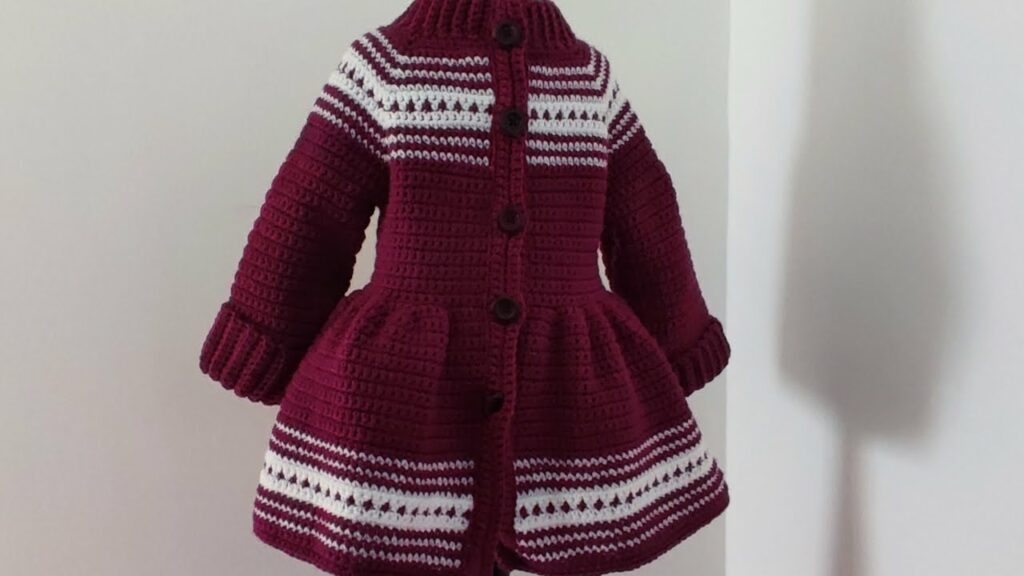
- Preparation: Choose your pattern, make that all-important gauge swatch, and gather all your materials.
- Crochet Body Panels: Begin by crocheting the back panel first. Then, crochet the two front panels, carefully following the pattern’s instructions for shaping the armholes, neckline, and front opening.
- Crochet Sleeves: Work two sleeves, shaping for the armholes and tapering down to the cuffs.
- Crochet Collar/Hood: Crochet this piece separately, following the pattern for its specific shaping and size.
- Assemble Panels: Using the mattress stitch, neatly seam the shoulder seams, then the side seams of the body panels. Seam the sleeves.
- Attach Sleeves: Securely seam the finished sleeves to the armhole openings of the body.
- Attach Collar/Hood: Pin the completed collar or hood to the neckline of the coat, ensuring even placement, and securely seam or slip stitch it in place.
- Add Front Bands & Hem: Crochet the front bands along the opening of the coat, incorporating buttonholes on one side. Add a ribbing or chosen border to the bottom hem.
- Finishing Touches: Weave in all remaining yarn ends meticulously with a tapestry needle. Sew on your chosen buttons securely.
- Add Lining (Optional but Recommended for Coats): If adding a fabric lining, follow the steps to cut and sew your lining pieces, then attach them neatly to the inside of the coat.
- Blocking: This final, transformative step is crucial for a garment. Gently wet or steam the finished coat/cardigan, carefully reshape it to the pattern’s exact dimensions, and pin it flat on blocking mats. Allow it to dry completely. Blocking evens out stitches, relaxes the fabric, enhances drape, and sets the final, polished shape.
Tips for Success
- Read the Pattern Thoroughly: Understand the entire construction process, including all shaping details and special stitches, before you begin.
- Don’t Skip the Gauge Swatch! (This is non-negotiable for wearable items, especially larger ones like coats).
- Use Stitch Markers Extensively: They are invaluable for marking shaping points, seam lines, counting, and keeping track of complex stitch patterns.
- Count Your Stitches Diligently: This simple habit helps catch errors early, preventing frustration and unraveling later.
- Invest Time in Seaming: Learning and using the mattress stitch for joining panels will make a dramatic difference in the professional appearance and durability of your garment.
- Consider a Lining: For a coat, a lining vastly improves warmth, drape, and the garment’s overall luxurious feel and longevity.
- Patience and Persistence: A coat/cardigan is a larger project. Take breaks when needed, celebrate small victories, and enjoy the journey of creation.
- Blocking is Your Best Friend: It truly elevates a handmade garment from good to professional.
VIIDEO TUTORIAL PART 2
Caring for Your “Winter’s Tale” Cardigan/Coat
To ensure your cozy creation remains pristine and well-loved for years:
- Follow Yarn Label Instructions: Always defer to the specific care instructions on your chosen yarn skein.
- Gentle Washing: Hand wash in cool water with a mild, gentle detergent, or use your machine’s delicate/gentle cycle (only if the yarn is specifically labeled as machine washable, e.g., superwash wools).
- Reshape and Dry Flat: Gently squeeze out excess water (never wring or twist!). Reshape the garment to its original dimensions and lay it flat on a clean towel or a mesh drying rack to air dry completely.
- Never Hang Wet: Avoid hanging a wet crocheted coat/cardigan, as its weight will cause it to stretch and distort out of shape.
- Storage: Store folded in a clean, dry place to maintain its shape.
Crocheting a “Winter’s Tale” cardigan or coat for a girl is a monumental and deeply satisfying project. It’s an act of love, skill, and creative vision, resulting in a garment that not only provides unparalleled warmth and comfort but also embodies the enchanting beauty of a frosted, magical world. Embrace the challenge, and revel in the joy of seeing your little one wrapped in your handmade masterpiece, ready for their own winter’s tale.

